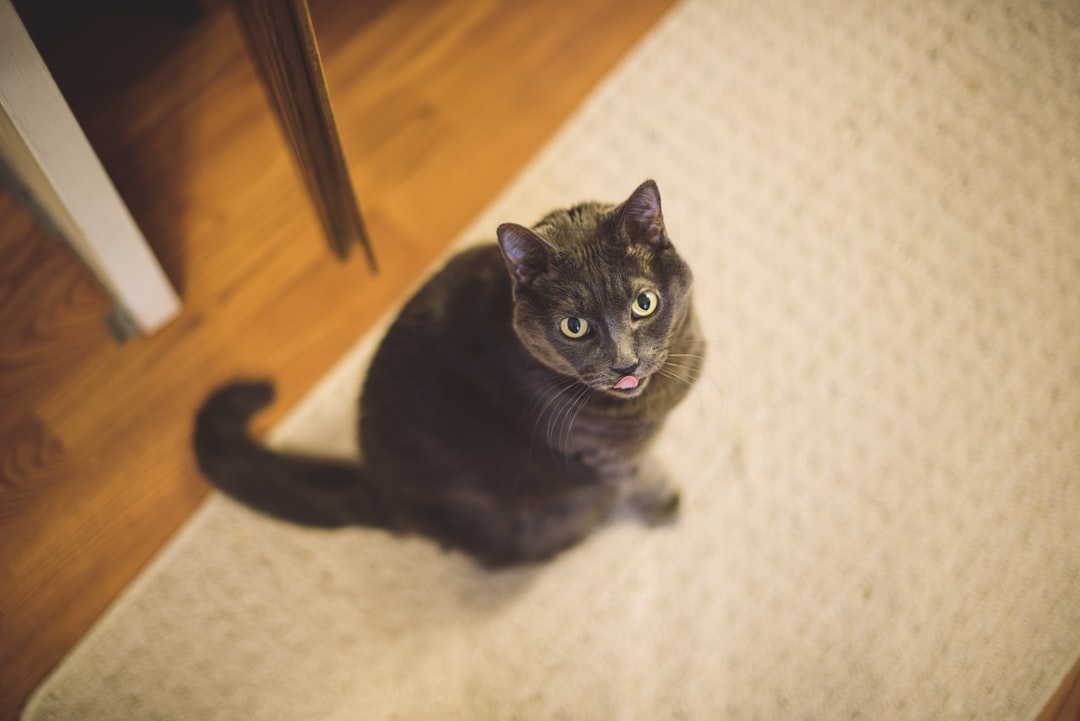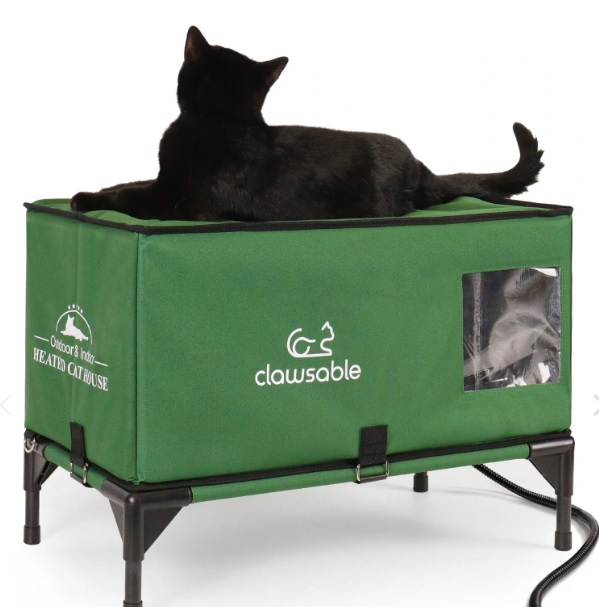Choosing the right equipment for your feline friend can be daunting, especially when it comes to something like a cat muzzle. Understanding the various cat muzzle uses is crucial for ensuring your pet’s safety and comfort during stressful situations, such as vet visits or grooming. In this guide, we’ll delve into the different types of cat muzzles on the market and how to select the best cat muzzle for vet visits. Additionally, we’ll provide you with essential tips on how to train your cat to wear a muzzle, introduce the muzzle gradually, and highlight common mistakes to avoid. Get ready to empower yourself with the knowledge needed to make an informed choice for your beloved companion!
Understanding Cat Muzzles: Purpose and Benefits
Cat muzzles are essential tools designed to ensure a safe environment for both feline companions and their caregivers. The cat muzzle uses extend beyond merely preventing biting; they can be particularly beneficial during stressful situations such as veterinary visits, grooming sessions, or travel. By using a muzzle, pet owners can mitigate the risk of injury and create a more manageable experience for their cats.
Here are some key benefits of using cat muzzles:
| Benefit | Description |
|---|---|
| Safety | Prevents biting and scratching during stressful situations. |
| Calm Environment | Reduces anxiety for both the cat and the veterinarian or groomer. |
| Improved Handling | Facilitates easier control during examinations or treatments. |
| Training Tool | Helps in training cats to accept handling and various procedures. |
It’s crucial to select the best cat muzzle for vet visits, taking into consideration the comfort and fit for the individual cat. A properly fitted muzzle allows the cat to breathe naturally, pant, and drink water, thus ensuring that it remains as comfortable as possible during stressful encounters.
Moreover, understanding how to train a cat to wear a muzzle is vital. Start by introducing the muzzle in a positive way, allowing your cat to explore it before attempting to put it on. This gradual process helps to create positive associations, reducing stress-related responses.
Overall, cat muzzles serve as valuable tools that offer safety and peace of mind in various scenarios, helping to ensure a more positive experience for both cats and their human handlers.
Different Types of Cat Muzzles on the Market
When it comes to ensuring the safety and comfort of your feline friend during stressful situations, understanding the different types of cat muzzles available is essential. Each type is designed with unique features that cater to specific needs, making it vital for pet owners to choose wisely.
Here’s a breakdown of the main types of cat muzzles:
| Type | Description | Use Case |
|---|---|---|
| Fabric Muzzles | Made from breathable materials, these muzzles are soft and lightweight. | Ideal for short periods and vet visits. |
| Wire Muzzles | These muzzles are sturdy and provide excellent ventilation. | Suitable for more aggressive or anxious cats. |
| Basket Muzzles | A versatile option that allows for panting and drinking while preventing biting. | Best for socialization and vet visits. |
| Custom-Fit Muzzles | Tailored specifically for your cat’s unique facial structure, ensuring maximum comfort. | Recommended for long-term wear or grooming. |
When selecting the best cat muzzle for vet visits, consider factors like your cat’s temperament and the duration of use. It’s important to choose a muzzle that balances comfort with safety to avoid increased stress.
Additionally, learning how to train a cat to wear a muzzle is crucial for successful use. Training should be approached gradually, so the cat associates the muzzle with positive experiences rather than fear. Introducing it at home in a relaxed environment may help ease the transition and foster a sense of safety.
By understanding the different types of cat muzzles and selecting the appropriate one, you can ensure that your cat feels safe and secure, ultimately making vet trips and grooming sessions more manageable.
How to Choose the Right Size for Your Cat
Selecting the correct size for your cat’s muzzle is essential for ensuring their safety and comfort. A proper fit not only prevents discomfort but also makes the muzzle effective in various situations, such as vet visits or grooming. Here are some key factors to consider:
Measuring Your Cat
To choose the right size for your cat, start by taking precise measurements. Use a soft measuring tape to gauge the following:
| Measurement | Description |
|---|---|
| Circumference | Measure around the widest part of your cat’s snout. |
| Length | Measure from the tip of the nose to just above the ears. |
| Width | Measure the widest part of the muzzle area to ensure a good fit. |
Make sure to keep the measuring tape snug but not tight.
Size Charts
Most brands provide size charts that correlate measurement ranges with specific muzzle sizes. Here’s a quick reference guide:
| Size | Snout Circumference (inches) | Snout Length (inches) |
|---|---|---|
| Small | 6-8 | 3-4 |
| Medium | 8-10 | 4-5 |
| Large | 10-12 | 5-6 |
Using these charts can significantly simplify your decision-making process.
Testing for Comfort
After selecting a size, it’s crucial to test the muzzle on your cat. Look for signs of discomfort such as excessive pawing or trying to remove it. A well-fitted muzzle should allow your cat to open their mouth slightly and breathe comfortably, thereby ensuring that if your feline needs one, it serves its cat muzzle uses effectively.
With the right size, you’ll not only find the best cat muzzle for vet visits but also make the whole experience more manageable for both you and your furry friend. Taking the time to invest in a proper fit will help facilitate a smoother transition to muzzle training.
Best Cat Muzzle for Vet Visits: Top Recommendations
When it’s time for a vet visit, selecting the best cat muzzle for vet visits can be essential for both your cat’s comfort and the safety of veterinary staff. Not all muzzles are created equal, so we’ve compiled a list of top recommendations to make your choice easier.
| Muzzle Type | Features | Why It’s Recommended |
|---|---|---|
| Baskerville Ultra Muzzle | Lightweight, adjustable straps, made with soft rubber | Offers security without restricting breathing, perfect for anxious cats. |
| PetSafe Cat Muzzle | Breathable mesh fabric, contoured to fit cats | Comfortable and gentle on furry noses, ensuring a stress-free experience. |
| Restraint Muzzle | Easy to clean, durable material | Ideal for aggressive cats, providing effective restraint while remaining safe. |
Why Use a Muzzle at the Vet?
Using a muzzle has several cat muzzle uses, especially in a high-stress environment like a veterinary clinic. It helps:
- Protect vet staff from bites.
- Keep your feline calm and focused during examination.
- Prevent defensive behavior during treatments.
Training to Wear a Muzzle
It’s crucial to understand how to train a cat to wear a muzzle gradually. Here are some tips to ensure a smoother transition:
- Start Slow: Introduce the muzzle by letting your cat explore it without any pressure.
- Positive Reinforcement: Reward your cat with treats when they come near the muzzle to build a positive association.
- Short Sessions: Gradually increase the amount of time your cat wears the muzzle, always pairing it with treats and affection.
These top recommendations ensure your cat is prepared for their vet visits while keeping the wellness of both your pet and veterinary staff at the forefront.
Safety Considerations When Using a Cat Muzzle
When it comes to the cat muzzle uses, safety must be a top priority to ensure a positive experience for both the owner and the feline. While muzzles can serve as effective tools to limit biting or aggressive behaviors during stressful situations, like vet visits, improper use can lead to discomfort or anxiety in your pet. Here are some vital safety considerations:
| Consideration | Recommendation |
|---|---|
| Fit | Ensure the muzzle fits snugly but comfortably, allowing your cat to breathe easily. A poor fit can cause distress or harm. |
| Duration | Limit the time your cat spends wearing a muzzle. Extended use can cause stress or overheating. |
| Supervision | Always supervise your cat while wearing a muzzle to intervene if they show signs of distress or struggle. |
| Material | Choose a muzzle made from breathable materials. Avoid options that restrict airflow to prevent overheating. |
| Acclimatization | Gradually acclimate your cat to the muzzle. How to train your cat to wear a muzzle properly will help reduce fear associated with it. |
Selecting the best cat muzzle for vet visits should include evaluating these safety factors to ensure your pet is comfortable and stress-free. By being mindful of these considerations, you’ll be able to promote a calm atmosphere during potentially overwhelming situations. Proper usage not only enhances safety but ultimately makes the experience less daunting for your furry friend. Remember, it’s about maintaining a balance between functionality and comfort!
How to Train Your Cat to Wear a Muzzle
Training your cat to wear a muzzle can be a straightforward process if approached correctly. How to train cat to wear a muzzle involves gradual exposure and positive reinforcement. Here are some effective steps to follow:
Start with Familiarization
Begin by allowing your cat to investigate the muzzle. Place it near their favorite playing area or their bed. This helps them associate the muzzle with a safe and familiar environment. You can even sprinkle a few treats around it to create a positive association.
Short Sessions
After your cat shows comfort with the muzzle, begin short training sessions. Gently place the muzzle on your cat but only for a few seconds. Praise your cat and offer treats during this time. Make sure to keep these sessions brief (around 5-10 minutes) to avoid overwhelming them.
Gradually Increase Duration
As your cat becomes more accustomed, gradually increase the time they wear the muzzle. Monitor their body language closely; if they appear stressed, reduce the duration. This process allows your cat to adapt without feeling confined.
Positive Reinforcement
Throughout the training, always reward with praise or treats when your cat allows you to put the muzzle on. This is crucial in establishing a sense of comfort. Additionally, try using the best cat muzzle for vet visits, and practice wearing it just before scheduled trips, so your pet becomes familiar with its use.
Consistency is Key
Regularly practicing these steps will make it easier for your cat to wear a muzzle without anxiety. Consistency over time is critical in reinforcing the behavior you want.
Following these tips will enhance your success in training your feline friend to feel comfortable with a muzzle and make for a less stressful experience during vet visits or other situations.
Tips for Introducing the Muzzle to Your Cat
Introducing a cat muzzle to your feline friend can be a smooth process if approached with care. Follow these strategic tips to ensure a positive experience for both you and your cat:
| Step | Description |
|---|---|
| Gradual Exposure | Start by allowing your cat to sniff and explore the muzzle while it’s on the ground. This helps eliminate fear and promotes curiosity. |
| Positive Reinforcement | Reward your cat with treats and praise each time they interact with the muzzle. This creates a positive association, making it more likely they will accept it. |
| Short Sessions | Begin with brief sessions of wearing the muzzle. As your cat becomes more comfortable, gradually extend the duration. |
| Familiar Environment | Introduce the muzzle in a familiar and calm environment, reducing stress and anxiety for your cat. |
| Playtime Integration | Incorporate the muzzle into playtime by using toys or treats while they wear it. This distraction can significantly improve their comfort level. |
Remember, the aim is to foster a sense of security and trust. Patience is key, so be prepared to spend time on the how to train cat to wear a muzzle technique until your cat is fully comfortable.
While it may take some time, these methods can significantly enhance your cat’s acceptance of a muzzle, paving the way for smoother experiences, especially during vet visits. After all, finding the best cat muzzle for vet visits can be of immense benefit, ensuring a safe and stress-free environment for both your cat and the veterinary staff.
Common Mistakes to Avoid When Using Cat Muzzles
Using cat muzzles can be beneficial for both pet owners and their feline companions, especially during stressful situations like vet visits or grooming. However, it’s essential to avoid common pitfalls to ensure safety and comfort. Here are some key mistakes to sidestep:
| Mistake | Description | Solution |
|---|---|---|
| Failing to Properly Introduce the Muzzle | Cats are creatures of habit. Abruptly introducing a muzzle can lead to anxiety. | Gradually expose your cat to the muzzle by allowing it to sniff and explore it first. |
| Selecting the Wrong Size | A poorly fitted muzzle can cause discomfort or escape attempts. | Measure your cat’s snout carefully and consult sizing charts to find the best cat muzzle for vet visits. |
| Neglecting Training | Assuming a cat will automatically accept a muzzle can result in a stressful experience. | Invest time in how to train cat to wear a muzzle by using treats and positive reinforcement. |
| Ignoring Safety Precautions | Overusing a muzzle without breaks can lead to stress and breathing issues. | Always supervise your cat while muzzled and limit wearing time to necessary situations. |
| Using It as a Punishment | Associating a muzzle with negative experiences can lead to fear. | Use the muzzle only in safe environments and for positive experiences to build trust. |
By avoiding these mistakes, you can ensure a smoother experience for your cat when using cat muzzles. Taking the time to train and properly fit the muzzle will result in a more relaxed and happy feline, making necessary visits like to the vet less of a hassle for everyone involved.



